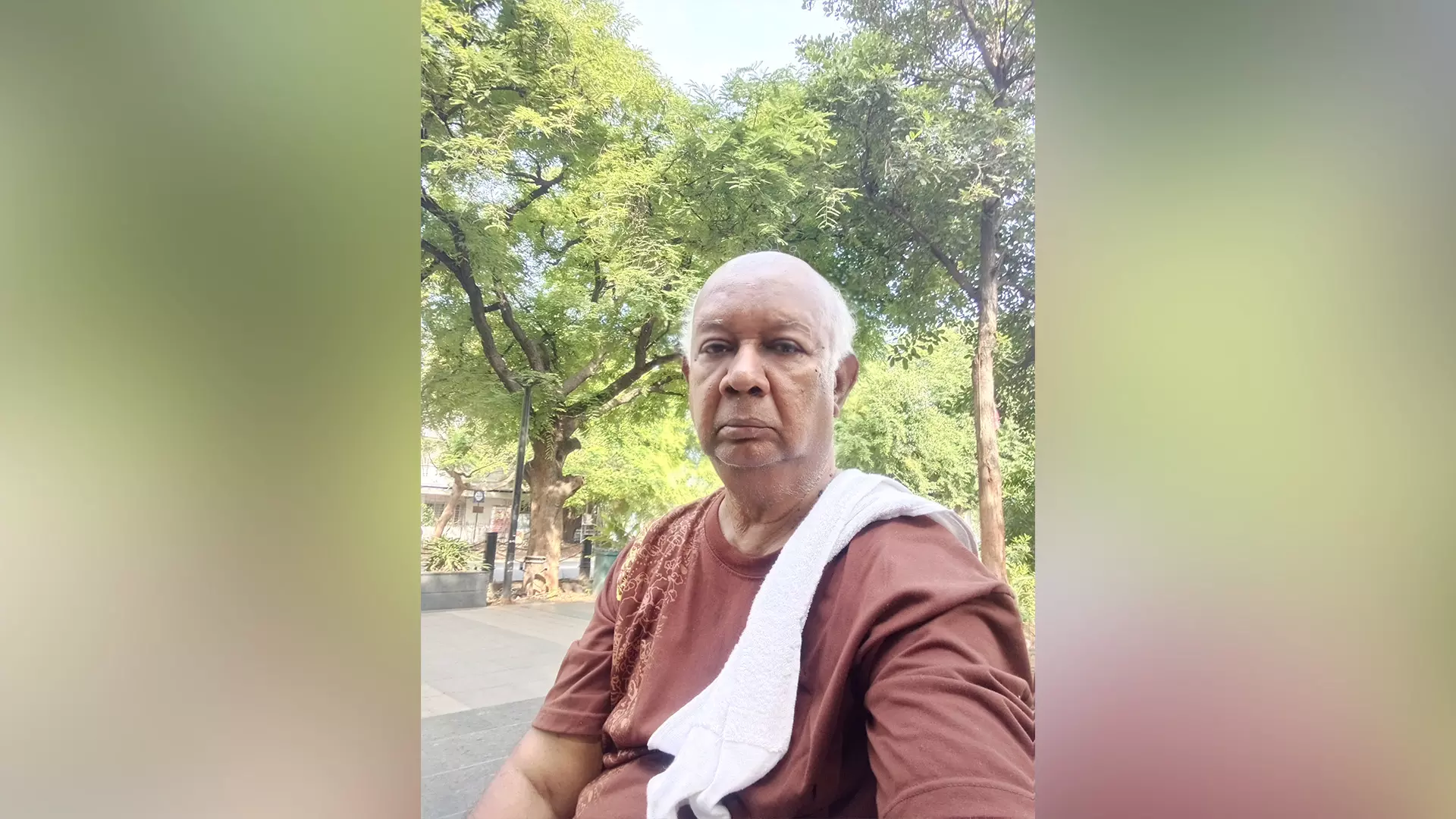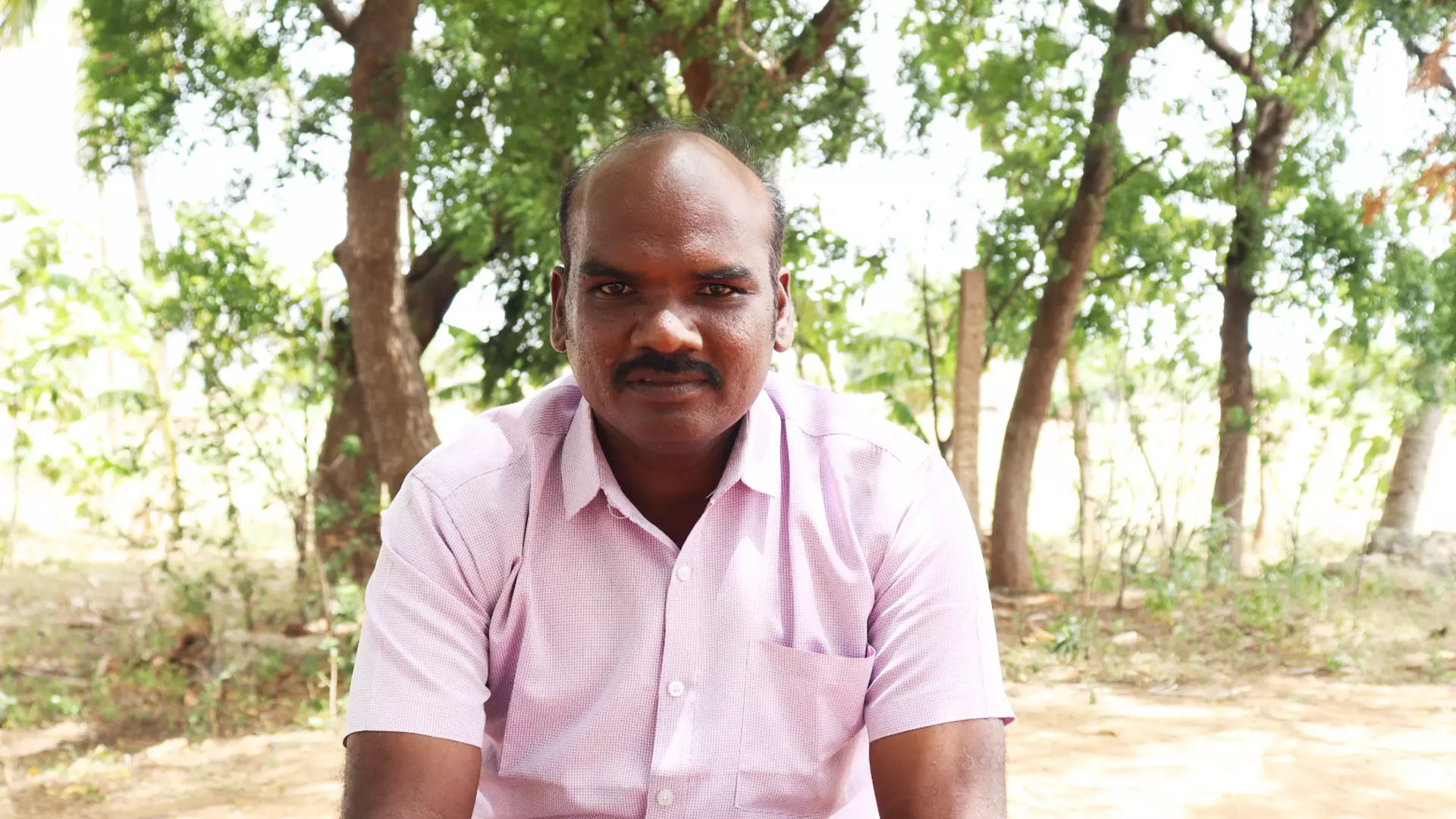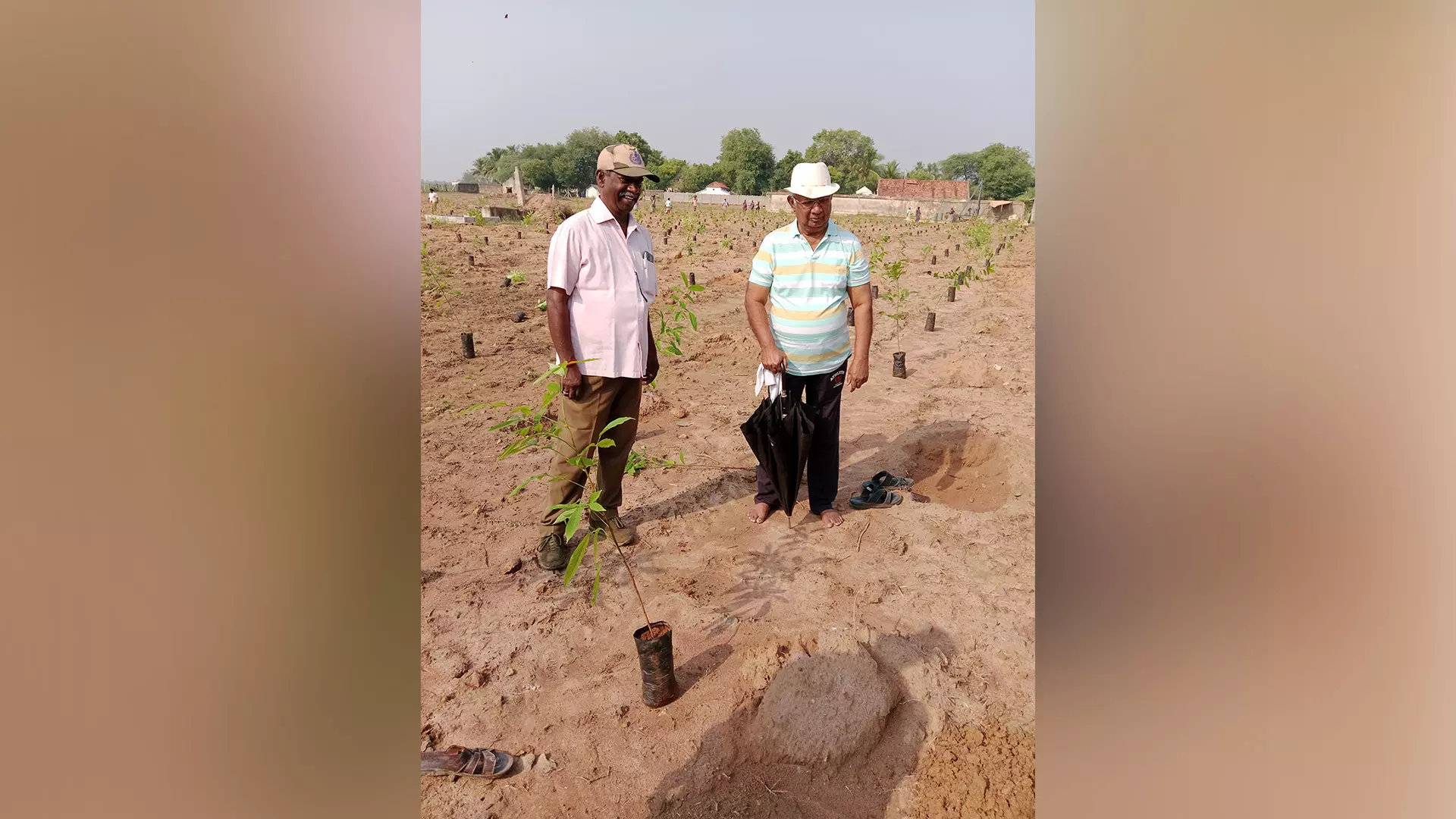
- Home
- India
- World
- Premium
- THE FEDERAL SPECIAL
- Analysis
- States
- Perspective
- Videos
- Sports
- Education
- Entertainment
- Elections
- Features
- Health
- Business
- Series
- In memoriam: Sheikh Mujibur Rahman
- Bishnoi's Men
- NEET TANGLE
- Economy Series
- Earth Day
- Kashmir’s Frozen Turbulence
- India@75
- The legend of Ramjanmabhoomi
- Liberalisation@30
- How to tame a dragon
- Celebrating biodiversity
- Farm Matters
- 50 days of solitude
- Bringing Migrants Home
- Budget 2020
- Jharkhand Votes
- The Federal Investigates
- The Federal Impact
- Vanishing Sand
- Gandhi @ 150
- Andhra Today
- Field report
- Operation Gulmarg
- Pandemic @1 Mn in India
- The Federal Year-End
- The Zero Year
- Science
- Brand studio
- Newsletter
- Elections 2024
- Events
Of human genomics, immunology of infectious diseases and DNA sequencing

Scholars believe that homo sapiens evolved in Africa 180,000-236,000 years ago, a short period compared to the history of the origin of life on this planet (four billion years). They say hominoids (gibbon), our ancestors, were separated from old world monkeys 20 million years ago giving rise to orangutan, gorilla, chimpanzee, australopithecus and various homo species such as neanderthal,...
Scholars believe that homo sapiens evolved in Africa 180,000-236,000 years ago, a short period compared to the history of the origin of life on this planet (four billion years). They say hominoids (gibbon), our ancestors, were separated from old world monkeys 20 million years ago giving rise to orangutan, gorilla, chimpanzee, australopithecus and various homo species such as neanderthal, homo erectus and finally, the home sapiens. Seventy thousand years ago, due to natural calamities, a small group of men left Africa through the eastern horn. Called ‘First Out of Africa Coastal Migration’, this is a great event in the history of mankind. When renowned genomic scientist Ramasamy Pitchappan traced this migration through a villager called Virumandi in 2001, it was considered a great feat in the field.
The Genographic study in which Pitchappan was part of a targeted sample size of one lakh people from all over the world and the budget of the project was $20 million was the largest ever undertaken public research supported by renowned global agencies such as National Geographic, IBM and The Ted Waitt Family Foundation. Virumandi, a native of Jyothimanickam, a village 48 km from Madurai, was a student at a college in Madurai when Pitchappan and his team stumbled on him to take samples for the Genographic Project in the late 1990s.

Renowned genomic scientist Ramasamy Pitchappan traced the migration of homo sapiens from Africa through a villager called Virumandi in 2001.
After a detailed analysis of the sample, the team found that he carried a mutation M130 on his male chromosome that characterised the first Out of Africa lineages. A successful trace of the ancestral lineage showed that about 2500 generations ago Virumandi’s ancestors first migrated from Africa, walked over the coasts of India, Burma, Philippines and finally reached Australia. Although this marker was found only in 12 out of the 250 samples of Tamil Nadu that the team collected, Virumandi was the first one who they found in flesh and blood, with M130 marker. This marker has been reported in 50% of Australian Aborigines, 20% of Filipinos, 10 % in Malay aborigines, 5 to 7% in Tamil Nadu in select population groups and 2% in the Middle East.
Tracing the ancestral lineage of Virumandi was a turning point. Virumandi became popular all over the world, thanks to the national and international media which gave wide coverage to the study. After two decades of scientific advancement in the field of genome sequencing, Pitchappan says that the study still stands valid. In a recent study titled ‘50,000 Years of Evolutionary History of India: Insights from 2,700 Whole Genome Sequences’, scholars Elise Kerdoncuff, Priya Moorjani and others, made some significant observations on the genetic history of India. The conclusions, according to Pitchappan, were based on their whole genome analysis of 2,700 Indians from most of the states and the authors concluded that most of the genetic variation in India originated from a single major Out of Africa migration that occurred 50 kya (thousand years ago).
“In addition, most Indians derive ancestry from three ancestral groups related to ancient Iranian farmers, Eurasian Steppe pastoralists and South Asian hunter-gatherers, and also a common source of Iranian related ancestry from early Neolithic cultures of Central Asia. Interestingly, these authors also identified 1-2% of Neanderthals and Denisovans ancestry in Indians through gene flow, so far claimed only in Europeans. Indeed, Indians have the largest variation in Neanderthal ancestry, as well as the highest number of population-specific Neanderthal segments in India the study extended. This makes India one of the early landscapes of successful human settlements, expansion and cultural evolution next to Africa. It is gratifying to note that our finding of Virumandi and the time frame has been vindicated and further elaborated,” said Pitchappan, a pioneer in immunology of infectious diseases, transplantation immunology and human genomics in India.
DNA, according to Pitchappan, is the buzzword of the 21st century. “It has changed the whole approach of life sciences research overnight. It has revolutionised medical diagnostics and healthcare. These diagnostics provide great hope for better patient management and cure. As in the case of cancer, autism and many other diseases these are nowadays applied but 95% of these diagnostic candidates are under trial,” he says.

Virumandi, a native of Jyothimanickam, a village 48 km from Madurai, was a student at a college in Madurai when Pitchappan and his team stumbled on him to take samples for the Genographic Project in the late 1990s.
The DNA typing technologies now locate and refine the involved markers on the chromosome and DNA sequences. “When a functional gene resulted in coding for a protein, like insulin, a marker like M130, an SNP mutation from T to A, helped in tracing the ancestry of Virumandi. There are 28,000 genes in most of the cells in our body: But this is less than five percent of our whole genome. The rest 95% of the genome does not have any meaningful transcription or known function. But their sequence differences between two individuals are used to trace the ancestry, descendance and inheritance of a disease or character,” says Pitchappan.
Even though DNA is the most powerful and ultimate tool in most modern biological study, Pitchappan says it should not be used to denigrate other studies carried out by simple methodologies. “The ABO blood group can easily be identified by antibodies. We don’t need to perform a PCR (polymerase chain reaction) and confirm at gene level here. Compound optical microscope is sufficient to identify malarial parasites in routine use, rather than an electron microscope. In earlier days, phenotype was used by physical anthropologists. Colour charts were used to identify colour blindness. At the end of the day, the gene, the light pale coloured gene of Indians and that of Indo-Europeans, are identity by descent (same one): this was confirmed at the gene and sequence level. We do not require an atom bomb to kill mosquitoes in a malaria epidemic. Scientists need to make right decisions before selecting a tool to answer the question on hand,” he says. Cases such as IFN gamma diagnostics for TB and D-rise and Vit-D deficiency are classical examples as in both the cases, the technology and epidemiology is at fault.
Most of the DNA technologies are powerful, simple, cost effective, reproducible and testable in another laboratory, according to Pitchappan. DNA stands boiling temperature and is not easily perishable. Most of the DNA techniques except Whole Genome Scan are available and affordable in Indian laboratories. But there is a problem. “Though they are taught at college levels, they are not practised in their laboratory, for reasons of non-availability of materials, equipment and reagents. We have to import every fine chemical and quality disposable and many times the science and clinical laboratories become slaves to the machines and their products. The knowledge economies fix the price and make money,” says the 78-year-old. Time was when marketing companies would provide annual printed price lists for equipment and chemicals, be it imported or indigenous but that's not happening now.

Ramasamy Pitchappan practices agro forestry over 3.5 acres.
“Today, most companies do not provide printed price lists. They fix the price depending on the institution. About 30 to 50% of the sale proceeds goes to the marketing company as agent commission. This is true with any high tech diagnostic instruments and diagnostics in the medical field as well. The Council of Scientific and Industrial Research, department of biotechnology and other government agencies do not want to promote manufacturing indigenous products of any sort. Neither the marketing companies. With globalisation, we have lost the esteem for Indian products and there is no incentive for such manufacturing,” he said. What’s the solution? “Like western cars manufactured in India, medical equipment, research and clinical diagnostic and laboratory equipment should be ‘made in India’, on a war footing,” he added.
Pitchappan said the scientists all over the world working on human genetics and migration are very much interested in Indian populations, for the simple reason that mankind has established itself successfully early in India and evolved demographically to a greater extent. However, there is a negative trend in India. “The interest in subjects like human diversity has come down. Only a few biologists and historians are interested in the population studies in the country today. Added to this, the Central government is yet to release the data of the Socio Economic and Caste Census (SECC) due to lack of comprehension. The data is significant as it is the first caste-based census in the country since 1931. The Anthropological Survey of India (AnSI) is ‘perfectly’ misplaced by only studying the tribes that account for only 8% of the Indian population,” says Pitchappan, who served as professor of immunology at Madurai Kamaraj University between 1986 and 2006. How do we solve this?
“The whole genome and immune genome map of India is the need of the hour to understand the population history of the country. It is also essential for further research in the field of forensic, predictive and preventive medicines. A well-designed caste census is absolutely essential to evaluate the implementation of government subsidies and social justice,” he added.
At 78, Pitchappan is active and believes that scientists don't have retirements. “Real scientists don't have retirements throughout the world. In the west, scientists continue to work till the age of 70 or 80 or till the time they want to work.But in India, I retired from my university service in 2006 though I never felt that I retired from science. In fact, science did not leave me and it came to me in the form of many projects. Science can’t be considered as a profession, it is an intuition,” says Pitchappan.
With the help of UGC and Government of Tamil Nadu, an ancient DNA laboratory with a positive pressure chamber to handle precious DNA from bones retrieved from burials has been established at the Madurai Kamaraj University. “It is one of the three in the country. The DNA of the excavated skeletons may tell the age of the burial, the life and antiquity of the people and thus the characteristics of the civilizations of yester millenia. The Athichanallur, Sivakalai, Kodumanal, Keezhadi bones and artefacts could place the populations 3.6 (kya) as early Sangam period dwellings and neolithic people. We may need to dig deep to retrieve bones of much more antiquity, and defining the people of the Deccan by archaeology may be possible. In addition, to reconstruct our ancient history and fill the gaps, we need to resort to modern DNA studies,” he says.

An archaeological excavation site at Adichanallur in Thoothukudi.
Despite being a professor for a long time, Pitchappan says the teaching and learning process in the country and state universities in particular are poor. “Many including those who govern may think that getting some foreign universities in India is the solution: this is an ill-placed move. Even though biotechnology and other subjects are taught in universities, they are not practised in the laboratory level due to non-availability of materials and equipment. This is happening in the field of DNA sequencing as well,” he said. How to overcome this malady? “One way is to improve the quality of our college and university teaching and learning process. Towards this step, in a small way I have floated a ‘PITCH foundation’ and we plan to provide hands on to the needy and conduct periodical conferences, symposia and workshops for the college teachers, researchers and students,” he said.
